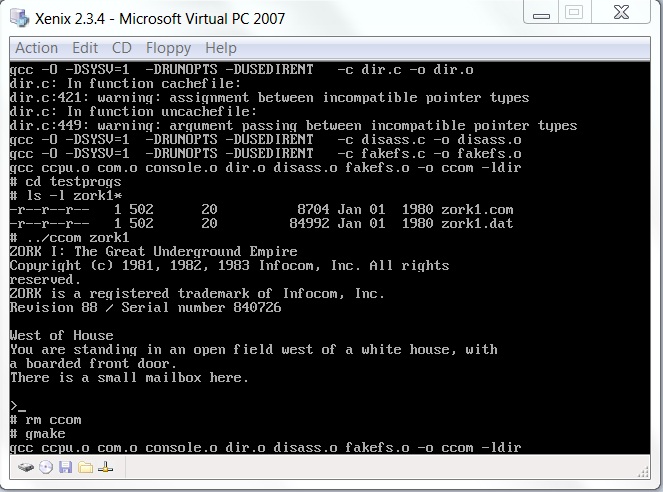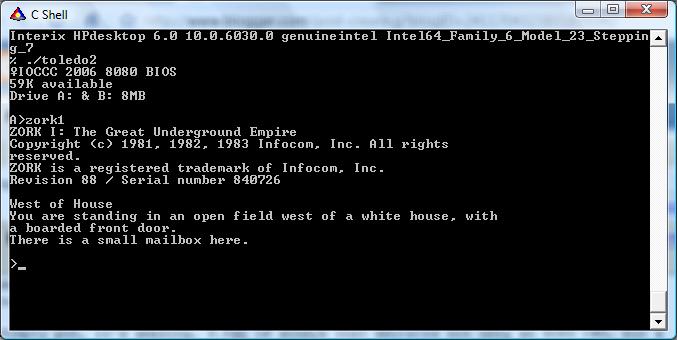I was surprised to come across this little simulator simply called ‘com‘ tonight. This program started out as a 8080 instruction simulator for a mc68000 machine running CP/M, back in 1984, and was written by one Jim Cathey.
‘Com’ was then later written up, and published in Dr. Dobb’s Journal.
From there it’s evolved it’s assembly core to some other 68000 cpu families and platforms, then the MIPS and PowerPC. Then in 2006 the CPU core was re-written in C.
For a while it’s primary platform was a 68000 based Unix, and it still has a lot of unix’isims buried in the source. I’m sure it’d build in MinGW though.
But in the meantime I figured it was yet another reason to fire up the old gcc 1.37.1 for Xenix to give this thing a go.
The biggest, and dumbest thing I fought was without realizing there was both a ‘Makefile’, and a ‘makefile’, and gmake kept running the lowercase one, while I was editing the Makefile in vain… But with that out of the way, and a few includes to fix, it was VERY straight forward to build. Not to mention running Xenix on Virtual PC 2007 on my new intel core i7 cpu, it compiles the C version just about as quickly as I can hit the enter key.
Because it’s on Virtual PC the last few lines of the console are garbled.. Oh well, at least the floppy controller works (as long as you hard code /dev/fd0 to 2,60).
So, here is a picture:

Xenix 2.3.4 with ccom zork1
And a disk image. All I’ve really done is tweaked a few things, and built this with gcc so it includes a binary for Xenix systems. Also the ‘com.tar.gz’ package did include quite a few sample programs… mandog.com is fun, along with zork 1,2 &3!
On a final note, I thought the Xenix thing was a good road to head down because in the 1990’s there was this BIG push for ibcs2 compatibility across all these Unix platforms on the i386 cpu. Well it’s been largely abandoned work, and the best I got was OpenBSD complaining that its always out of memory, and NetBSD kernel panics!.. Open Solaris has *NO* ibcs2 compatibility even left.
I suspect it doesn’t matter, esp now that you can run some real ibcs2 OS’s in a VM, who needs 3rd party emulation?
I guess I’m just too late to the party.


